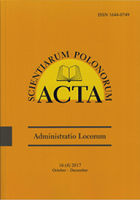The territorial ordering for the diversification of the electrical system. Case study: Isla de la Juventud
The territorial ordering for the diversification of the electrical system. Case study: Isla de la Juventud
Author(s): Mirelys Torres-Pérez, María Rodríguez Gámez, Antonio Vázquez Pérez, Miguel Castro Fernández, Miriam Vilaragut Llanes, Javier Domínguez BravoSubject(s): Energy and Environmental Studies, Applied Geography, Policy, planning, forecast and speculation, Economic development
Published by: Wydawnictwo Uniwersytetu Warmińsko-Mazurskiego w Olsztynie
Keywords: territorial ordering; geospatial planning; Renewable Energy Sources (RES); sustainable development; Geographic Information Systems (GIS);
Summary/Abstract: In the year 1882 when the first power plant designed by Thomas Edison began operations in Wisconsin, United States, the price of fuels was little more than symbolic and there was no knowledge about the environmental damage caused by the energy exploitation of fossil fuels. Currently the situation is completely different, with an unstable and expensive oil price, as well as an environmental awareness forged in the consequences of the over-exploitation of natural resources, the structuring of a sustainable energy matrix constitutes a challenge that is sustained in the use of renewable energies available territorially. For this, it will be necessary to bring the techniques and tools of territorial planning closer to the tasks of energy development, on the basis of achieving adequate planning of the space for the use of the endogenous energy resources of the territories. The objective of the work consists of proposing the application of a methodology for the study of the application of renewable sources, starting from determining the viable physical areas for their introduction, applying techniques of land use planning through a GIS. The Isla de la Juventud is a special municipality of the island of Cuba with significant renewable potential, however, the limitations inherited from traditional development models restricts the sustainable development of the territory from being achieved. In the period from 2010 to 2014, two projects were carried out to contribute to the diversification of the energy matrix, through the application of a territorial energy development model. This article takes up the main results of these projects, considering that they are currently valid. In this sense, an analysis of the energy matrix on the Isla de la Juventud was carried out at present and the projections until 2030, from a perspective of land use planning; with the aim that can get constituted as a guide for organization and planning of the integrative process of the renewable energies, in the diversifying process of the energetic matrix of Cuba.
Journal: Acta Scientiarum Polonorum Administratio Locorum
- Issue Year: 21/2022
- Issue No: 2
- Page Range: 241-266
- Page Count: 26
- Language: English

